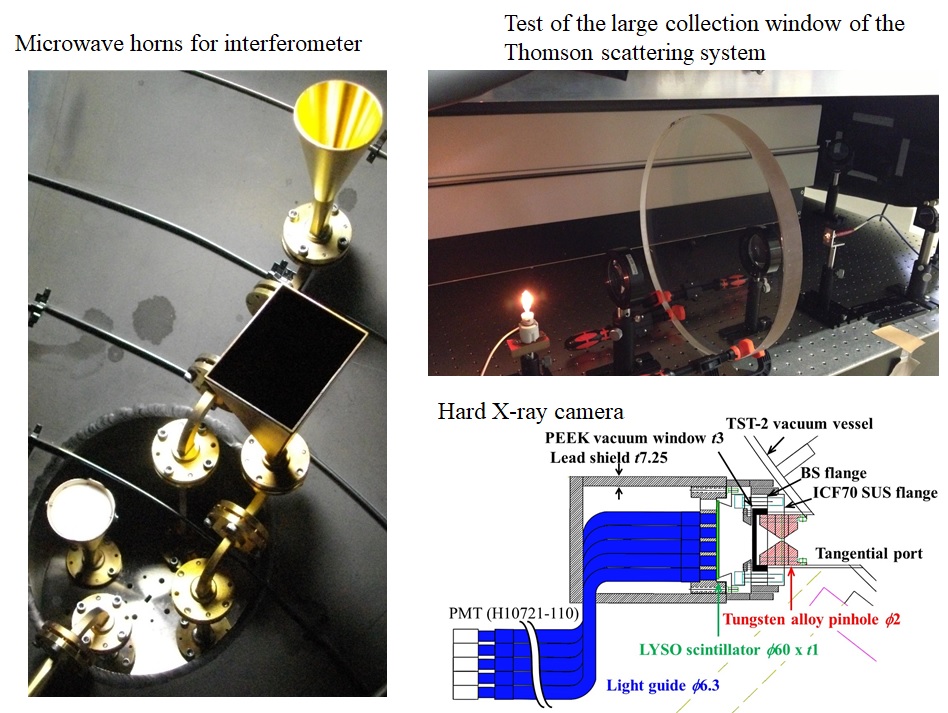Ejiri-Tsujii Laboratory
Dept. Complexity Science and Engineering, Grad. School of Frontier Sciences / Dept. Physics, Grad. School of Science, The University of Tokyo![]()
![]()
![]()
Ejiri-Tsujii Laboratory
| Top page | Reseach | Lab member | Admission | Publications | Access/Contact | Photos | Japanese |
Development of advanced diagnostics
Since the plasma temperature is very hot, we cannot insert a solid measurement
device. However, we want to
measure the prameters, such as temperature, density magnetic field, current density, which have a certain
spatial distribution. Thus, we need sphisticated dianostics to measure
such huge information. Indeed, the degree
of the freedom a plasma has is quite large. In such a situation, developement of diagnostics is inevitable and
important in nuclear fusion science.
The measument methods can be classified into the following two categories.
Passive measurements is a method
to measure various emissions, such as electromagnetic waves, are measured. The other is active measurements,
where light or particles are injected to the plasma and its response is
measured. In TST-2, we uses various
electromagetic waves: microwave, near infrared light, visible light, UV
light, ultra-soft X-ray, xoft X-ray, hard X-ray.
The photographs show some of them. Since we want to measure or reconstruc
the spatial distributions in plasma
using measurement systems located outside the plasma, we need a recontruction method, like CT. We use CT
techniques specilaized for plasma measurements. The recently developed
machine learning techniques are also
usefule in some situations.

| Current drive and heating | Ultra low density RF plasma | |
| Turbulence/Transport/Instabilities | ||
| Nonlinear/Nonequilibrium/Self sustained systems | Advanced diagnotics |
We will realize a covienient compact nuclear fusion reactor based on spherical tokamak configuration through the above research.